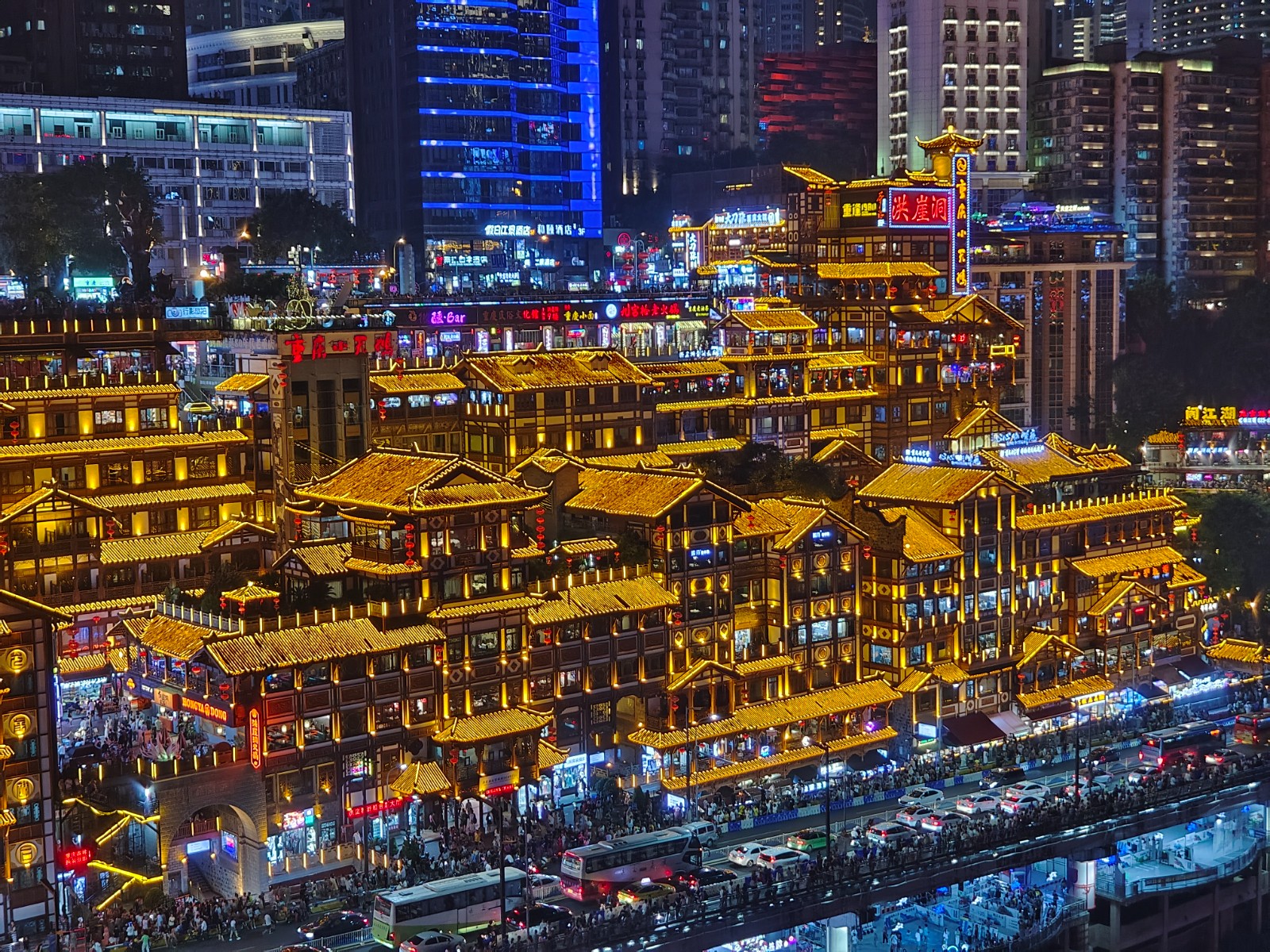



Hongya Cave, originally named Hongya Gate, is one of Chongqing’s ancient city gates dating back to the Ming Dynasty. Once a strategic military and trade hub, it evolved into a cultural landmark that embodies the "mountain city" spirit. Today, this AAAA-rated national attraction (est. 2006) preserves the legacy of Chongqing’s Ba-Yu culture through its iconic stilted houses (diaojiaolou), which cling to cliffs overlooking the confluence of the Yangtze and Jialing Rivers.

Architectural Marvels & Highlights
Stilted House Complex:
The heart of Hongya Cave is its 11-story diaojiaolou cluster, a masterpiece of traditional Bayu architecture. These wooden structures, built into the hillside, create a surreal "vertical village" where exiting the 11th floor leads to a street, while the 1st floor opens to the riverside—a quintessential Chongqing optical illusion68.
Must-Visit Spots:
City Skyline Viewing Deck (11F): Panoramic vistas of the rivers, Qiansimen Bridge, and the glittering CBD skyline.
Hongya Waterfall: A cascading artificial waterfall ("Hongya Drip Green") that recreates a scene from ancient Chongqing’s "Twelve Views".
Qiansimen Bridge Walkway: Capture postcard-perfect photos of the illuminated cave complex at night56.
Ancient Streets & Themed Floors: Explore floors dedicated to local crafts, teahouses, and nostalgic 1980s Chongqing78.
Nighttime Spectacle:
After sunset (lights on at 18:00–23:00), Hongya Cave transforms into a golden-hued fairy tale, earning its nickname "Real-Life Spirited Away Town".
Why Visit?
Cultural Immersion: Wander through replica Ming-Qing streets, attend folk performances, and savor Bayu opera shows68.
Culinary Adventure: Dive into Chongqing’s spicy soul with hotpot, sour-spicy noodles, and skewers from food stalls across floors 4–978.
Photography Paradise: Iconic shots at the Jialing Riverside, waterfall grottoes, and bridge viewpoints.
Travel Tips & Practical Info
Address: No. 88, Jialing Binjiang Road, Yuzhong District56.
Transportation:
Metro: Line 1/6 to Xiaoshizi Station (Exit 9, 5-min walk) or Line 2 to Linjiangmen Station56.
Bus: Routes 111, 151, or 181 to Hongyadong Station6.
Taxi: Navigate to “Hongya Cave” (parking scarce; avoid peak hours).
Tickets: Free entry but advance online reservation required via official WeChat mini-program or Meituan56.
Best Time to Visit:
Evening (18:00–21:00): For night views and cooler temperatures. Avoid weekends/holidays for fewer crowds78.
Spring (Mar–May) & Autumn (Sep–Nov): Pleasant weather (15–25°C) ideal for exploring78.
Pro Tips:
Arrive before 19:00 to secure prime photo spots at Qiansimen Bridge.
Wear non-slip shoes—steep stairs and slopes abound!
Combine with a Two Rivers Night Cruise (departing from nearby Chaotianmen Pier) for a full Chongqing night experience26.
Nearby Attractions
Jiefangbei CBD: 10-minute walk to Chongqing’s bustling commercial heart6.
CiqiKou Ancient Town: 30-minute drive to explore Ming-era streets and porcelain shops78.
Chongqing People’s Great Hall: A Soviet-inspired architectural gem opposite Three Gorges Museum15.
Final Note:
Hongya Cave isn’t just a tourist spot—it’s a living chronicle of Chongqing’s resilience and charm. As poet Guo Moruo once wrote, “No night in Chongqing is complete without Hongya’s glow.” Whether you’re a history buff, foodie, or Instagrammer, this cliffside wonder promises an unforgettable encounter with China’s most 8D魔幻 city!
“To visit Chongqing and miss Hongya Cave is to see Paris without the Eiffel Tower.” —Local Proverb